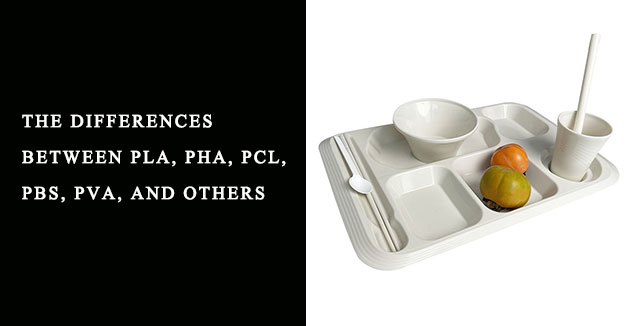Green Biodegradable Plastics: Understanding The Differences Between Pla, Pha, Pcl, Pbs, Pva, And Others
As the world becomes increasingly aware of the negative impact of plastics on the environment, more and more companies are turning to biodegradable plastics as a more sustainable alternative. There are several types of green biodegradable plastics available, each with its unique set of properties and benefits. In this article, we will explore the differences between some of the most common types of biodegradable plastics.
Polylactic Acid (PLA)
PLA is a bio-based plastic made from renewable resources such as cornstarch, sugarcane, and cassava. It is commonly used in food packaging and disposable tableware, as well as in 3D printing. PLA is biodegradable in commercial composting facilities and breaks down into carbon dioxide, water, and organic matter.
Polyhydroxyalkanoates (PHA)
PHA is a group of biopolymers produced by microorganisms such as bacteria and algae. It is used in various applications such as packaging materials, disposable diapers, and medical implants. PHA is biodegradable in both industrial and home composting facilities, as well as in soil and water.
Polycaprolactone (PCL)
PCL is a bio-based plastic made from petrochemicals and is commonly used in 3D printing, drug delivery, and wound healing applications. It is biodegradable in industrial composting facilities and can also break down in soil and water.
Polybutylene Succinate (PBS)
PBS is a bio-based plastic made from renewable resources such as cornstarch and is commonly used in packaging, disposable tableware, and agricultural films. It is biodegradable in industrial composting facilities and can also break down in soil and water.
Polyvinyl Alcohol (PVA)
PVA is a bio-based plastic made from renewable resources such as corn and sugarcane. It is commonly used in packaging, textiles, and medical applications. PVA is biodegradable in industrial composting facilities and can also break down in water.
Other biodegradable plastics include polycaprolactam (PA), polybutylene adipate terephthalate (PBAT), and cellulose acetate (CA). Each of these plastics has its own set of properties and benefits, making them suitable for different applications.

As the leading PLA Polylactic Acid manufacturer in China, iSuoChem has been in this biodegrade material since 2007. When our customers come to choosing the right biodegradable plastic, it is essential to consider the intended use, disposal method, and environmental impact. While biodegradable plastics offer a more sustainable option than traditional plastics, they are not a perfect solution. It is crucial to remember that proper disposal of biodegradable plastics is essential to ensure they break down correctly and do not contribute to environmental pollution.
In conclusion, the different types of green biodegradable plastics offer a promising solution for reducing the impact of plastic waste on the environment. By understanding the differences between these materials, we can make informed decisions when it comes to choosing the right biodegradable plastic for our specific needs.